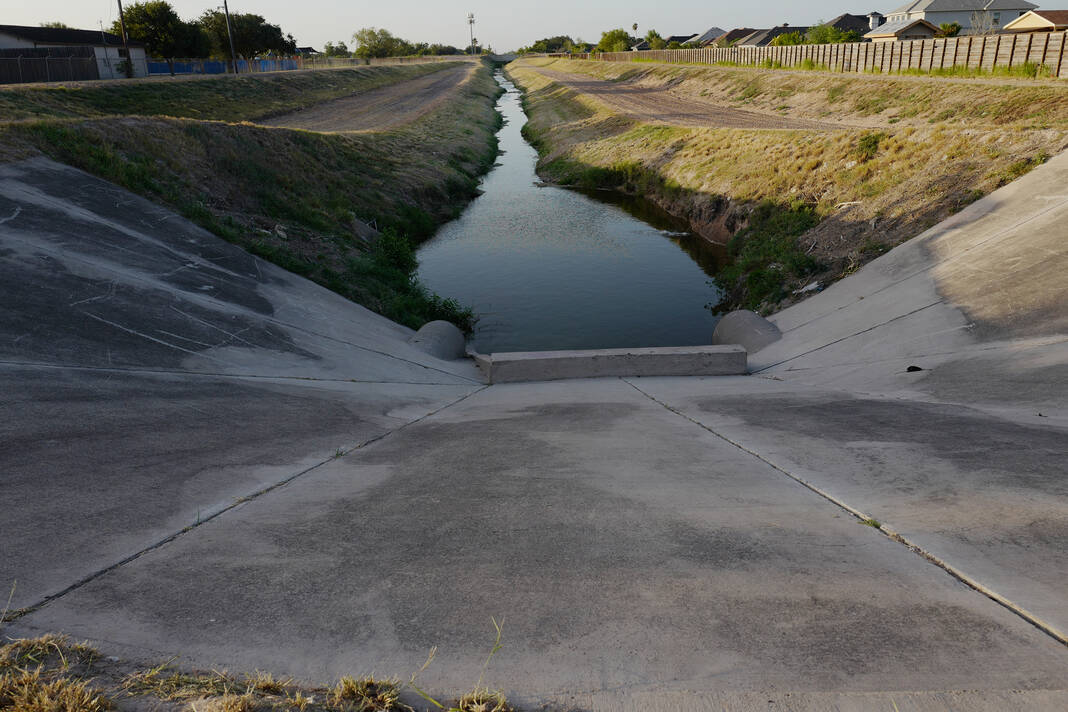The first quarter of 2025 has just ended, and it already appears that the Rio Grande Valley agriculture industry once again will qualify for disaster relief related to both having too much water and not having enough.
Many Valley growers, like other parts of the region, are still dealing with the effects of last week’s heavy rainfall and flooding, but those effects likely will fade quickly if we return to the overall dry conditions that have plagued South Texas for decades. Analysts say they will, as they are the results of a general climate change that appears to be permanent.
 A man closes the trunk of his vehicle after it was caught in a flood in near the McAllen Convention Center during a downpour on Thursday, March 26, 2025, in McAllen. (Joel Martinez | jmartinez@themonitor.com)
A man closes the trunk of his vehicle after it was caught in a flood in near the McAllen Convention Center during a downpour on Thursday, March 26, 2025, in McAllen. (Joel Martinez | jmartinez@themonitor.com)Those conditions are most acute here in the Valley, but water shortages have become a statewide issue. This means not only that state officials are paying more attention to our water needs, but also that this region must compete with other areas regarding efforts to address, and mitigate, water shortages.
The Texas Water Development Board recently released a report noting that climate change, outdated infrastructure and increased demand resulting from rapid population growth contribute to a water crisis that already exists, and that raise our state’s water needs by 7.7 million acre-feet, to 18.5 acre-feet per year, by 2070.
One acre-foot is about 326,000 gallons, enough to meet the needs of six people for an entire year.
The board offered more than 2,400 different projects to help Texas meet those needs. They include finding new water sources, improving and expanding infrastructure and developing ways to conserve water and use it more efficiently.
In addition, the Texas Legislature is considering several bills to address statewide water needs.
Local officials should review the TWDB’s report and see how its recommendations might be used in the Valley. Additionally, they should monitor the bills in the legislature, provide input where they can, and prepare strategies to utilize any legislation our lawmakers passes so that our needs can best be met.
 The main drainage on Canton Road is seen on Wednesday, July 19, 2023, in Edinburg. (Delcia Lopez| dlopez@themonitor.com)
The main drainage on Canton Road is seen on Wednesday, July 19, 2023, in Edinburg. (Delcia Lopez| dlopez@themonitor.com)Those bills include proposals to allocate up to $1 billion per year in water development projects. Local officials should assist any state efforts to pass, and promote, such amendments.
One bill would create a statewide advisory committee to prioritize regions and projects on which to spend the money. We should be ready to offer recommendations that show the Valley has not only the need, but ready-made plans to help address that need. The could include some ideas that already have been suggested, such as construction of a third dam across the Rio Grande or retention ponds that can improve drainage and hold runoff in flood-prone areas such as the Valley.
Another bill would enlist researchers at Texas State University to study desalination as a larger part of our statewide water supply system. A desalination plant already operates in Cameron County, and local officials could offer it as a ready-made lab to benefit both the university and our local water systems.
These and other proposals could offer opportunities to help the Rio Grande Valley, and the state, address our water needs that already are critical, and will only increase in coming years.
The post Editorial: Valley officials should follow, offer input to proposed bills that address our water needs appeared first on MyRGV.com.
 (2).png)





 English (US)
English (US)